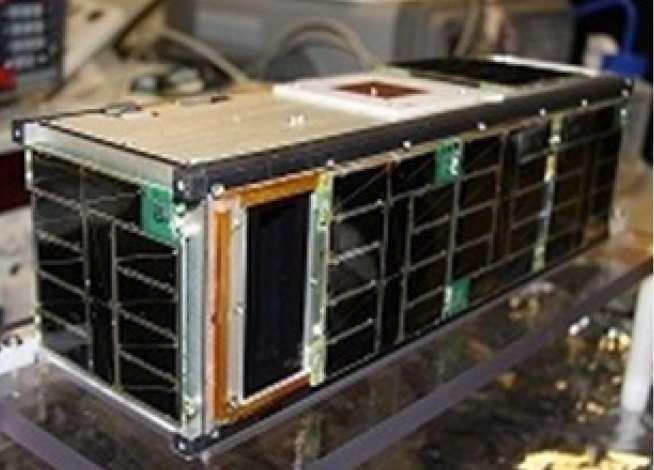MAGIC: Magnetometer from Imperial College

MAGIC is a two sensor, three axis science-grade magnetometer based on magnetoresistive technology. It contributes to TRIO-CINEMA by providing attitude information (by comparison to the Earth’s global field), local field direction to calculate pitch angle distributions, and by detecting small scale waves and other fluctuations.
MAGIC has an ultra-low power attitude mode and can be switched into a high precision science mode as required.
In order to reduce interference from spacecraft fields, the outboard sensor is located at the end of a 90cm stacer boom, deployed after launch.
MAGIC characteristics
| Parameter | Value |
|---|---|
| Electronics | Single PC104 card, 150g |
| Sensors | Outboard: <20g, 2cm cube. Inboard: on eletronics card |
| Boom | 90cm, stacer, SSL supplied |
| Voltages required | 3.3V, 5V, 12V, 17V |
| Spacecraft interface | Commanding and data via SPI |
MAGIC specifications
| Science mode | Attitude mode | |
|---|---|---|
| Power | 338mW | 178mW |
| Time resolution | 8 vectors/s | 4 vectors/s |
| Data rate | 578bps | 65bps |
| Instrument resolution | 1nT | 1nT |
| Noise | <2nT RMS | <10nT RMS |
STEIN: Supra-thermal electrons, ions and neutral atoms
The STEIN detector can detect and distinguish neutral atoms, ions and electrons, in the energy range 2-300keV and is a development of the STE detector flown on the STEREO mission. It has a 70x15 degree field of view: as the sapcecraft spins, it will image almost the entire sky at 15s resolution. It has a fine (1keV) energy resolution, making it possible to generate precise particle spectra.